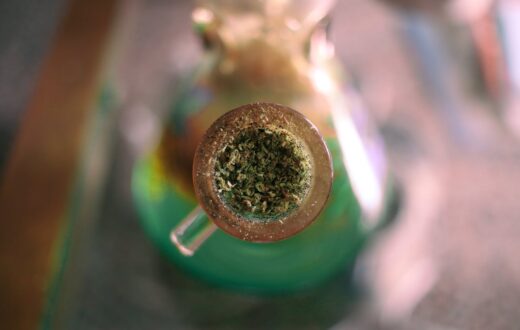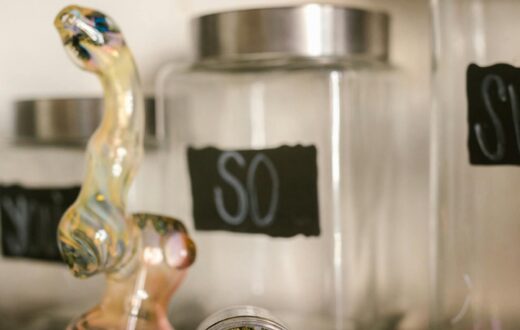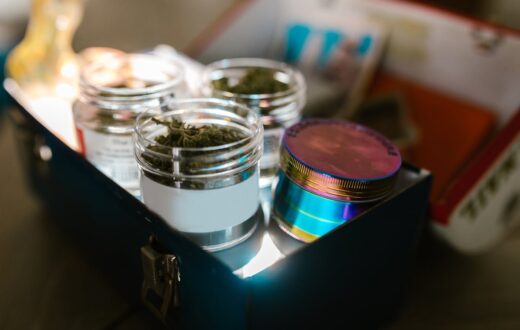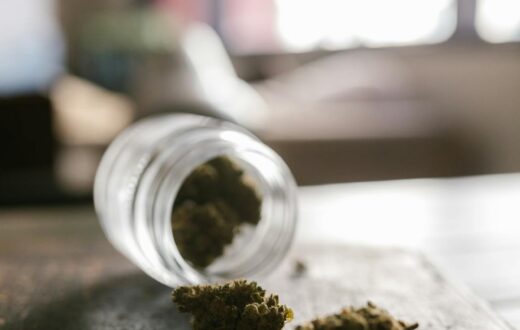Understanding the Germination Process
The germination of weed seeds is a critical phase in the cultivation of cannabis, setting the stage for the healthy growth of the plant. Germination refers to the process where a seed absorbs water, swells, and eventually breaks through its seed coat. This phase is influenced by several environmental factors, particularly moisture, temperature, and oxygen levels, each playing an integral role in promoting successful sprouting.
Moisture is perhaps the most vital component for germinating weed seeds. Seeds possess a natural protective coating that must be penetrated by water for the germination process to initiate. Once a seed absorbs sufficient moisture, it activates the enzymes required for growth, leading to cellular respiration, which is essential for energy production. Therefore, keeping the seeds appropriately hydrated during this crucial period is paramount.
Temperature also significantly affects the germination of cannabis seeds. Generally, cannabis seeds thrive in a warm environment, ideally around 70°F to 90°F (21°C to 32°C). At this temperature range, the biochemical reactions necessary for germination proceed rapidly, facilitating quicker and more efficient sprouting. Conversely, temperatures that are too low or excessively high can hinder or even entirely halt the germination process, resulting in poor seed viability.
Oxygen is the third crucial element required for germination. As seeds absorb water, they begin to respire, demanding a sufficient supply of oxygen. Without adequate oxygen, the seed’s metabolic activities cannot proceed, stalling the germination process. Thus, ensuring that the seeds are not only moist but also in an environment that allows for air exchange is vital in promoting healthy germination.
Creating the ideal conditions of moisture, temperature, and oxygen will provide a strong foundation for germinating weed seeds. This understanding of the germination process lays the groundwork for further exploration into optimal techniques for cultivating robust cannabis plants.
Choosing High-Quality Seeds
When embarking on the journey of how to germinate weed seeds, one of the most crucial steps involves selecting high-quality seeds. The quality of seeds directly influences not only the success of germination but also the overall yield of the cannabis plants. High-quality seeds result in vigorous growth, resilience against pests, and a robust return during harvest. Therefore, investing time in identifying reputable seed sources is essential.
Reputable seed banks are characterized by their transparency and the quality of their offerings. Look for seed banks that provide detailed information about each strain, including its genetics, expected yield, and specific growing requirements. Customer reviews and ratings can also serve as important indicators of a seed bank’s reputation. Trustworthy sellers typically offer guarantees on seed germination rates, which can reinforce their commitment to providing superior products.
When selecting weed seeds, consider the traits of healthy seeds. They should be firm, dark, and have a glossy appearance. Avoid seeds that are pale or have a brittle texture, as these are likely to be less viable. Additionally, the strain of cannabis can significantly affect the germination process and the future harvest. Strains known for their high germination success and yields may be advisable for novice growers or those seeking reliable outcomes.
Moreover, understanding the specific traits and characteristics of different cannabis strains can inform choices tailored to one’s cultivation goals. Certain strains may exhibit enhanced resistance to environmental stressors or pests, while others may thrive in specific conditions. Therefore, doing comprehensive research into strain selection is equally as important as verifying seed quality. In summary, selecting high-quality weed seeds that come from reputable sources and aligning them with your cultivation goals sets the foundation for successfully learning how to germinate weed seeds effectively.
Preparation: What You Need to Germinate Seeds
Successfully germinating weed seeds is a crucial first step in the cannabis cultivation process. To ensure a fruitful germination, it is essential to prepare adequately with the right tools and materials. Below, we highlight the key items you will need to facilitate this process and provide a checklist to guide you along the way.
First and foremost, paper towels are an excellent choice for germinating seeds due to their absorbent nature. They provide a moist environment, which is vital for encouraging seed sprouting. A simple dampened paper towel or several layers of them will serve as a suitable surface for seed placement. Be careful not to oversaturate, as this could lead to mold growth.
Germination trays are another critical component of this process. These trays usually have designated compartments that can hold multiple seeds, allowing for easy organization. Utilizing germination trays also helps retain moisture and provide adequate drainage, both essential for successful seed development. If trays are not available, using small pots or seedling plugs can be a practical alternative.
Another essential item is a reliable light source. Cannabis seeds thrive under certain light conditions, particularly during the sprouting phase. Using natural sunlight or artificial grow lights can help stimulate growth, especially in darker environments. Ensure that the light source is not too intense; soft, indirect light usually works best for the early stages of seed germination.
Finally, consider the substrate in which the seeds will germinate. High-quality soil or specific starter plugs designed for germination can provide the necessary nutrients and aeration for healthy root development. Make sure the substrate is sterile to avoid any unwanted pests and diseases that could hinder the germinating process.
In summary, preparing the right tools and materials is essential for successfully germinating weed seeds. By ensuring you have everything on hand before you start, you can lay the groundwork for a thriving cannabis plant.
Different Methods of Germination
Germinating weed seeds is a crucial step in the cannabis cultivation process, and several methods can be employed, each with its own merits. Understanding these methods can aid growers in choosing the best approach for their specific needs and preferences.
One of the most popular techniques is the paper towel method. This method involves placing weed seeds between damp paper towels, which are then kept in a warm, dark environment. The moisture and warmth facilitate the seed’s awakening, allowing it to sprout within a few days. This technique is effective and offers growers a straightforward way to monitor the seeds’ progress, making it especially favorable for those who prefer more hands-on observation.
Another effective approach is soaking seeds in water for 12 to 24 hours. This method allows the seeds to absorb moisture, swelling and softening the seed coat, which can expedite the sprouting process. Care must be taken to avoid over-soaking, as this could lead to seeds drowning. Soaking is particularly advantageous for growers who are looking to jumpstart the germination process quickly while ensuring a high germination rate.
For those who prefer a more traditional approach, using soil or starter cubes is a common method. Seeds can be directly sown into moist, nutrient-rich soil or specialized starter cubes designed for germination. This method offers a seamless transition from germination to the vegetative growth phase, as seedlings develop their roots directly in their final growing medium. Soil-based germination can be beneficial for beginners, providing a more forgiving environment for seedling development.
In conclusion, the various methods of germinating weed seeds allow for adaptability based on a grower’s experience level and specific requirements. Each technique offers unique advantages, ensuring that cannabis enthusiasts can select a germination method that aligns with their cultivation goals and practices.
Creating the Ideal Germination Environment
To successfully learn how to germinate weed seeds, it is essential to recognize the significance of environmental factors that affect seed sprouting. The optimal conditions for germination primarily include temperature, humidity, and light. Each of these aspects plays a crucial role in ensuring seeds can thrive during their initial stages of growth.
Temperature is a critical element in the germination process. Most cannabis seeds require a consistent temperature range of 70°F to 85°F (21°C to 29°C) to germinate effectively. Utilizing heat mats can provide the necessary warmth, especially in cooler climates or during colder months. These mats help maintain a stable temperature, promoting healthy sprouting and preventing issues such as seed dormancy.
Humidity also significantly influences germination. Seeds thrive in a humid environment, as it helps soften the seed coat and promotes germination. A relative humidity level of around 70-90% is ideal. To achieve these humid conditions, growers can use humidity domes or plastic wraps over their germination trays. This setup allows moisture to circulate while creating a warm micro-climate that fosters seed sprouting.
While light exposure is not required for the germination phase, providing appropriate lighting conditions can benefit the young seedlings once they emerge from the soil. Initially, it is crucial to ensure that seeds remain in a dark environment until germination occurs. Once seedlings appear, growers can introduce low-intensity light sources like fluorescent or LED grow lights, as these provide the necessary light spectrum without overwhelming the delicate sprouts.
By carefully controlling temperature, humidity, and light, cannabis growers can cultivate an ideal environment for how to germinate weed seeds. Implementing these tips and techniques can significantly increase the chances of successful germination, leading to healthy and robust plants.
Common Germination Challenges and Solutions
Germinating weed seeds can be a rewarding process, but it is not without its challenges. There are several common issues that growers face, such as mold growth, damping-off, and seed viability problems. Understanding these challenges and knowing how to address them is crucial for successful germination.
Mold is one of the most frequent issues encountered during the germination of cannabis seeds. It typically occurs in overly moist environments where humidity levels are high. To prevent mold growth, ensure that your germination area has proper airflow and maintains a humidity level between 70-80%. Additionally, using sterilized growing mediums and keeping the seeds from direct contact with excess moisture can significantly reduce the risk of fungus. If mold does develop, immediately remove the affected seeds and adjust the environmental conditions to promote a healthier atmosphere for remaining seeds.
Damping-off is another critical challenge that can lead to seedling death. This disease is caused by various soil-borne pathogens that thrive in excessively wet conditions. To combat this issue, opt for sterile germination mediums and closely monitor your watering habits. A good practice to implement is to allow the medium to dry slightly between waterings, as this discourages the growth of harmful fungi. If seedlings begin to show signs of damping-off, including wilting or discolored stems, they should be discarded swiftly to prevent the spread of pathogens.
Lastly, poor seed viability is a concern for many growers. Factors affecting this include seed age, storage conditions, and overall genetics. To enhance viability, choose reputable sources for your seeds and store them in cool, dry places. If you suspect that the seeds are no longer viable, conducting a water test can be informative; simply place the seeds in water and observe whether they sink. Seeds that float are often best discarded, while those that sink have a higher likelihood of germination. By being aware of these common challenges and implementing effective solutions, growers can successfully navigate the germination process with greater confidence. In conclusion, identifying and addressing these obstacles will ensure a higher success rate in your cannabis cultivation efforts.
Transplanting Germinated Seeds
Once seeds have successfully germinated, the next crucial step involves transplanting them into suitable containers or directly into the ground. Timing is a pivotal factor in this process. Ideally, the germination phase should be monitored closely, as seedlings should be transplanted once they develop a robust taproot and at least one set of true leaves. This generally occurs about 5 to 10 days after germination. Handling the seedlings with care is essential to prevent injury. It is advisable to keep the seedlings’ soil slightly moist before transplanting, as dry soil can lead to root breakage and stress.
When preparing for transplanting, select containers that allow for sufficient drainage, promoting healthy root movement. Standard plastic pots or biodegradable options work well for this purpose. Make sure to fill the containers with a nutrient-rich, well-aerated growing medium that enables proper water retention and drainage. Before placing the seedling into the new container, create a hole that accommodates the roots comfortably without bending or crowding them.
After situating the germinated seedlings in their new environment, it is crucial to provide adequate conditions for continued growth. Placing the containers in an area that receives indirect sunlight will help mitigate stress on the young plants. Overhead watering should be avoided to prevent the risk of damping-off disease. Instead, watering gently from the bottom can be effective, allowing the seedlings to absorb moisture gradually. As the seedlings acclimate to their new surroundings, monitoring temperature and humidity levels will further support healthy development. Understanding how to germinate weed seeds effectively lays the foundation for a fruitful cultivation journey, making the transplanting phase an imperative step toward a thriving cannabis crop.
Caring for Seedlings After Germination
Once you have successfully learned how to germinate weed seeds, the next essential phase is providing proper care for the seedlings. This period is crucial as it lays the foundation for healthy, thriving plants. The first aspect to consider is watering. Seedlings require a delicate balance; they should be kept moist but not soggy. Overwatering can lead to root rot, while underwatering can cause stress. A spray bottle or a gentle watering can is recommended to control the moisture levels without overwhelming the young roots.
Nutrients are also critical at this stage. While germinated seeds contain nutrients that support initial growth, seedlings often benefit from additional supplementation. It is advisable to use a diluted, balanced nutrient solution designed for seedlings. This will provide essential elements such as nitrogen, phosphorus, and potassium, which promote robust growth. However, it is crucial to administer nutrients sparingly; too much can lead to nutrient burn, severely affecting the plant’s health.
Equally important is ensuring that the seedlings receive adequate light. Cannabis seedlings thrive in bright light environments, and providing them with the right intensity and duration mimics their natural habitat. If using fluorescent or LED grow lights, position them at appropriate distances to avoid heat stress. Ideally, seedlings should receive 16-18 hours of light daily to encourage strong development. Regularly monitoring the light exposure will help prevent any leggy growth that could result from insufficient light.
In summary, nurturing seedlings post-germination is vital to transitioning them into successful plants. By carefully managing their watering, nutrient intake, and light exposure, cultivators can significantly increase the likelihood of fulfilling their growth potential and achieving high yields in the long run.
Conclusion: Mastering the Art of Germination
In this guide on how to germinate weed seeds, we have explored various methods and techniques that play a crucial role in ensuring successful cannabis cultivation. Proper germination is the foundational step that sets the stage for healthy plant development and bountiful yields. We discussed the significance of creating an optimal environment, including temperature, moisture levels, and light exposure, all of which contribute immensely to the germination process.
Understanding the different germination methods, such as the paper towel method, direct soil planting, and the use of starter cubes, allows growers to select the approach that aligns with their individual goals and growing conditions. Each method has its advantages, and experimenting with them can yield insights that enhance future germination endeavors. Furthermore, attention to quality seed selection cannot be overstated; healthy seeds are pivotal to successful germination and ultimately the vigor of the plants.
As highlighted throughout this guide, nurturing the germination phase is not merely an initial step but an ongoing commitment that will pay dividends in the later stages of growth. Utilizing techniques learned here will empower cannabis growers to optimize their methods and adapt as needed, fostering an understanding of how crucial these early stages are in the journey of cultivating cannabis.
Ultimately, mastering the art of germination requires practice and patience. By applying the insights gained from this guide and fine-tuning techniques based on specific environmental conditions and experiences, you will be better equipped to achieve your cannabis growing aspirations. Embrace the process, and let each germination attempt serve as a learning opportunity on your path to becoming a successful cannabis grower.














